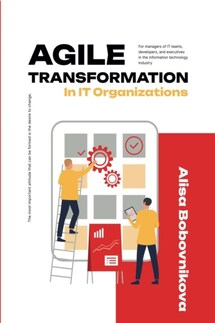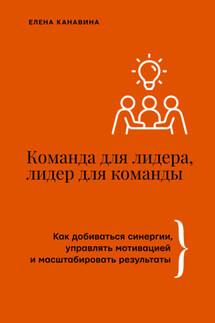Agile Transformation in IT-organizations - страница 7
CHAPTER 3. IMPLEMENTING AGILE APPROACH IDEAS INTO PRACTICE. LET'S BREAK DOWN THE INSTRUMENTS AND TECHNIQUES
Let’s look at frameworks that are used to implement Agile Approach ideas into real practice, but first let’s explain what a framework is.
Framework is a ready-made set of tools that helps the developer to create a product quickly: a website, an application, an online store, a CMS system.
Imagine that you decided to assemble a toy car: it should drive and look almost like a real one. Obviously, there are several ways to solve this problem:
• the car can be assembled independently, from scratch: create all the parts manually or with machining equipment, do electronics and electrics, paint everything. So you can control the whole process, but it will take a lot of time;
• a similar car can be assembled from ready-made kits: body parts, engine, electronics will become modules that are important to choose and connect correctly. If desired, you can improve any module, but generally this is not necessary, everything will work right out of the box.
The framework is the same ready-made set, only for the developer. It saves the time and effort of a specialist who would have spent on creating basic things and correcting simple mistakes.
The most common Agile framework is Scrum.
Scrum is a set of rules allowing the team to establish a flexible workflow. Development is carried out in iterations, the goals of each iteration and the tasks of each team member are clearly outlined. Due to Scrum, companies can apply the principles and values of Agile and work on projects of any complexity. Agile and Scrum concepts are regularly confused, considering that Agile and Scrum are the same.
The difference lies in the scale of two approaches: Agile is a special way of thinking, a mindset. Scrum is an instruction for use. A clear plan describing each step of Agile implementing in product development. This is a methodology with specific stages, in which roles and events are clearly defined.
Scrum is based on empiricism and lean thinking.
EMPIRICISM asserts that the source of knowledge is experience, and decision-making is based on observations. Lean thinking reduces losses and focuses the main.
Scrum uses an iterative-incremental approach to optimize predictability and risk
management. It involves groups of people who collectively possess all the skills and experience to do the job, to share knowledge and acquire the necessary skills as needed.
Scrum combines four formal events for inspection and adaptation into a container event – Sprint. These events work well because they implement the empirical pillars of Scrum: transparency, inspection and adaptation.
TRANSPARENCY: the emerging process and work should be visible both to those who do the work and to those who get results. Important decisions in Scrum are based on an assessment of the state of three formal artifacts16. Artifacts with low transparency can lead to solutions that reduce value and increase risk. Transparency makes inspection possible. Inspection without transparency is misleading and is a waste.
INSPECTION: to identify potentially undesirable deviations and problems, it is necessary to regularly and thoroughly inspect Scrum artifacts and progress towards achieving agreed goals. To help with the inspection, Scrum provides a






